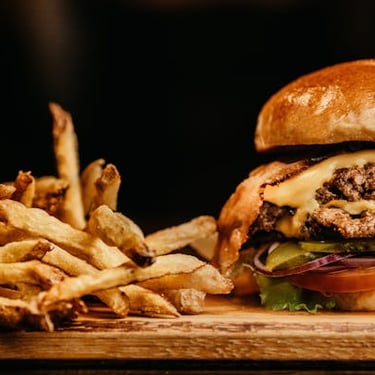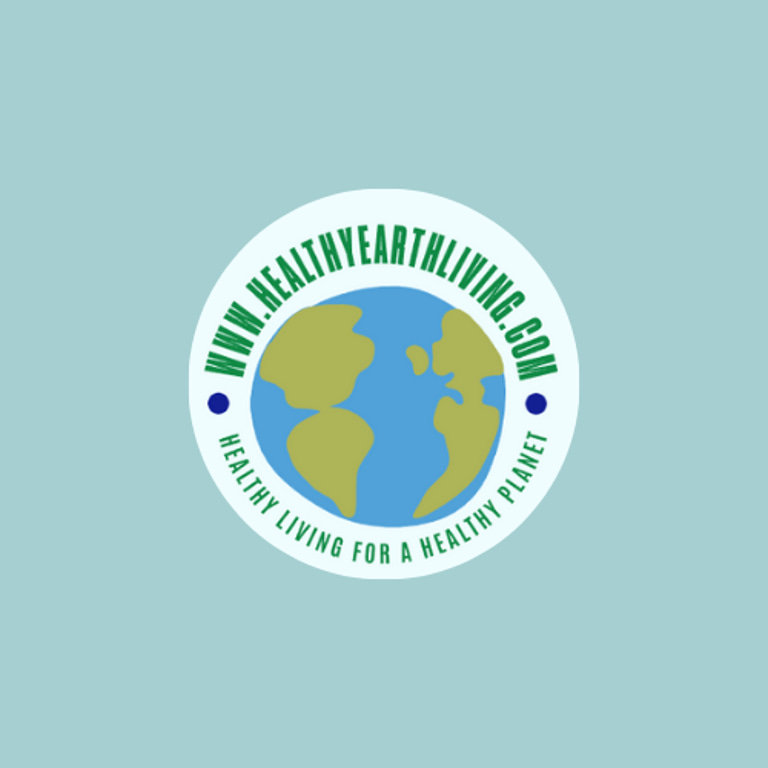Soothe Your Stomach!
Dr. Bhavani Dhulipala
6/25/20248 min read


Are you tired of that burning sensation in your chest? Let's explore some natural remedies to ease acid reflux and get you feeling comfortable again!
Acid reflux and its common symptoms
Do you know why you have that burning sensation in your chest?
Usually, the food you eat goes through a narrow pipe called the esophagus, which ends in the stomach.
This ending is guarded by a sphincter that acts like a door, the lower esophageal sphincter. This sphincter relaxes whenever food is at the lower end of the esophagus, i.e., at the doorstep of the stomach, so that only one-way passage is maintained. (1)
This means that food enters the stomach through the food pipe and does not reverse flow back into it.
In certain conditions, the door of the esophagus, i.e., the sphincter at the lower esophageal end, loosens, and food starts to flow back into the esophagus.
We all know that the stomach has acids that help digest the food we intake. When this acidic food flows back into the esophagus, it irritates and inflames your food pipe, leading to heartburn.
These are specific common causes of acid reflux apart from systemic diseases.
There are two main symptoms caused by this backflow of food:
Heartburn: The burning sensation felt in your chest or heart region (hence the name) on changing the posture
Regurgitation: The food ingested flows back into the mouth whenever you bend forward or lie down after eating.
Sometimes, sleep disturbances also occur when the refluxed food irritates the larynx.
It can sometimes trigger cough, asthma, dental erosions, dysphagia, sinusitis, and lung irritations.


Lifestyle Changes for Acid Reflux Relief
Natural remedies to help reduce acid reflux include: (3)
Consume more amounts of liquids than solids
Bananas
apple cider vinegar
Honey
Turmeric
chamomile tea
licorice,
slippery elm
ginger
baking soda
probiotics
All these help in managing the acute attacks of acid reflux, and long-term consumption might help in controlling the attacks.
Lifestyle modifications in managing acid reflux
Avoid taking foods that trigger the reflux. Know your body and try to understand what is good for you and what is not. (4)
Avoid irregular eating habits. Try to eat at the same time every day. Eat small quantities at small intervals.
Avoid fatty and oily foods like pizzas, burgers, pastries, and fries. These foods add bulk to your food and take a longer time to empty the stomach. As a result, the lower oesophageal sphincter is relaxed, and the acid refluxes back into the esophagus.
Avoid smoking and alcohol. They can reduce the stomach clearance rate, leading to increased intra-abdominal pressure and relaxation of the lower oesophageal sphincter.
Avoid sleeping or lying down immediately after eating. The food enters the stomach and stays there for a good long 2-3 hours, sometimes 4, depending on the meal. When you lie down during this period, it flows back. Though the lower oesophageal sphincter remains closed, over time, due to regular irritation, it gives in, and the acidic food from your stomach starts flowing back.
So avoid sleeping or lying down flat after eating. Take an elevation with a few pillows and try to lie down on your left side.
Avoid stress. Stress and anxiety activate the sympathetic nervous system, which triggers more acid production.
Avoid tight clothing on the abdomen to reduce the intra-abdominal pressure.
Maintaining a healthy weight, avoiding trigger foods, and eating smaller meals
The stomach produces acid whenever it is empty (that is why you feel the rumbling when you are hungry). Taking small meals at smaller intervals keeps the stomach filled and prevents the acid from coming into direct contact with the stomach walls.
So, keep taking simple and bland food at small intervals so your acid doesn’t reflux. Also, taking more fluids and salts can help to neutralize the acids produced.
If you are overweight, try to lose it, as obesity can lead to increased pressure on your abdomen and relaxation of the lower oesophageal sphincter, which again triggers acid reflux.
As said before, identify what triggers your body for acid reflux. Everybody is different. Try to understand your triggers and avoid those.
Practical tips for incorporating these changes into daily life
Being conscious about what we eat and drink every day is the key.
This could sound a bit out of context, but stress and anxiety are one of the primary triggers for acid reflux. We all feel grumpy and angry when we are hungry. Right?
What you eat in the morning affects your mood for the entire day. Having soft food for breakfast can improve your mood and help you have a good day.
Plan your diet a day early and prepare the food accordingly. Try to minimize outside food.
Plan a routine and stick to it.
The Power of Diet: Foods to Eat and Avoid
The right food at the correct intervals is the key to maintaining proper gut health.
Wrap your dinner 2-3 hours before bedtime.
Foods that can trigger or worsen acid reflux:
Caffeine (5)
Chocolates
Citrus/acidic food
Carbonated drinks
Fatty food
Fried food
Spicy foods
Alcohol
Reflux-friendly foods:
Soft and bland food(6)
Low-acid foods: Bananas, cauliflowers, nuts, and melons.
High fiber: oatmeal, brown rice
Green vegetables: asparagus, broccoli, green beans
Water-containing foods: cucumber, watermelon, broth-based soups, celery
Herbal Remedies and Supplements
You don’t always have to depend on medication to reduce acid reflux. Natural remedies can always come to your rescue!
Milk: (Non-fat dairy).
Ginger water has good digestive properties and helps reduce stomach acids
Apple cider vinegar: small amount in warm water
Probiotics help increase good gut bacteria, which act as natural buffers.
Honey and turmeric: They can help reduce acid reflux in warm water.
Potential benefits of chamomile, ginger, and licorice root in alleviating acid reflux symptoms:
Licorice root is traditionally used to prepare tobacco and as a spice to flavor food. A study found that using the root twice a day has reduced the use of antacids over two years. (3)
Chamomile tea: Although no particular studies have been done, it has shown a positive effect on acid reflux.
Slippery elm: drinking it after eating can help increase the mucus production in the stomach, thereby reducing acid production.


Stress Management Techniques
As said earlier, stress and anxiety are some of the leading causes of acid reflux. More stress causes more sympathetic stimulation, causing more acid release in the stomach.
Also, stress can lead to overeating. This can again trigger acid reflux.
Relaxation techniques include deep breathing, meditation, and yoga for managing stress-related reflux:
Meditation is found to have an immense effect on controlling anxiety and thoughts.
Focus on the breath. Thoughts might come and go. Just observe the thoughts and do not respond to them. (7)
Kapaalabhathi pranayama can help in controlling food cravings and also reducing belly fat.
Yoga is more than just twisting and curling up your body.
Meditation and yoga are traditional practices in Eastern countries that help relieve many health conditions. Though they can be used as therapy to alleviate a specific condition, practicing yoga daily can help restore gut health.


Practical tips for incorporating stress management into daily routines
Try to practice breathing exercises every day.
Physical exercises like walking or yoga can help control body weight and reduce acid reflux.
If these measures are tough, go for a walk—a good long walk for at least 50 minutes. Walking can help combat many illnesses, such as Diabetes and hypertension, help reduce weight, and, most importantly, help control anxiety.


Bottom Line
Natural ways to manage acid reflux:
low acid diet
regular exercise
no fat-rich food
sleeping with an elevation at the head
reducing body weight
timely and regular meals
taking an adequate amount of water (3)
Experiment with different remedies and lifestyle changes to find what works best:
Whenever there is an attack, try the remedies discussed above.
Experiment with those remedies in different combinations to learn what suits you the best.
The importance of consulting with a healthcare professional before making significant dietary or lifestyle changes:
All the above-discussed measures can be helpful only to a certain extent. If heartburn gets out of hand or if new and severe symptoms like vomiting, offensive breath, or stomach pain occur, consulting a healthcare professional could be the best option to prevent any further damage.








Elevate Your Sleeping Position
Food stays in the stomach for 2-3 hours after entering. When we lie down immediately after eating, the food flows back and starts creating pressure on the lower oesophageal sphincter, leading to a loosening of the sphincter. As a result, the acidic contents of the stomach enter the esophagus, causing all the symptoms. (8)
Elevating the head with pillows can prevent this from happening as the inclination is towards the stomach, and food stays in the stomach due to gravity.
Bed risers or wedge pillows:
Bed risers could offer a long-term solution if you prefer to avoid juggling with your pillows every day. Raising the bed to a comfortable inclination can help in preventing reflux.
Wedge pillows are specialized to a particular incline so that the person can lay his torso upon them. This helps prevent the backflow of gastric contents.
Recommendations for achieving optimal sleeping position for reflux relief:
The bed risers and wedge pillow can help get a proper sleep position.
You can also place the wedge under your pillow to be more comfortable.
Adjusting 2-3 pillows below the head can also help achieve the elevation.


Avoiding Triggers: Identifying and Managing
Avoiding all the factors above can be very helpful in controlling acid reflux.
Common triggers are spicy foods, smoking, and alcohol consumption; untimely meals; large meals with improper exercise; seasoned foods; and carbonated drinks.
Observe and track your daily habits to know what is triggering the reflux.
Strategies for avoiding trigger foods:
If you feel like eating something that can potentially cause heartburn, replace it with something else. For example, if you like eating fried chips, replace them with a fruit like a banana.
Do not avoid exercise. Regulate your food intake.
Keeping a food diary to track symptoms and identify patterns:
If you cannot identify your trigger foods immediately, try to maintain notes for your diet. (9)
Note down whatever you eat and the symptoms, if you have any.
Try to understand your eating and hunger patterns to prepare your schedule.
Try to eat healthy in small quantities every two hours.
Engaging your stomach with food is the fundamental rule.


© 2025 Salo Content Writing LLC, all rights reserved
Join the Movement for a Healthier Planet! 🌿
Subscribe now and get your FREE Sustainable Living Checklist! Plus, enjoy weekly articles and delicious plant-based recipes straight to your inbox. Let’s make sustainable living simple and inspiring, one email at a time! 💚✨
